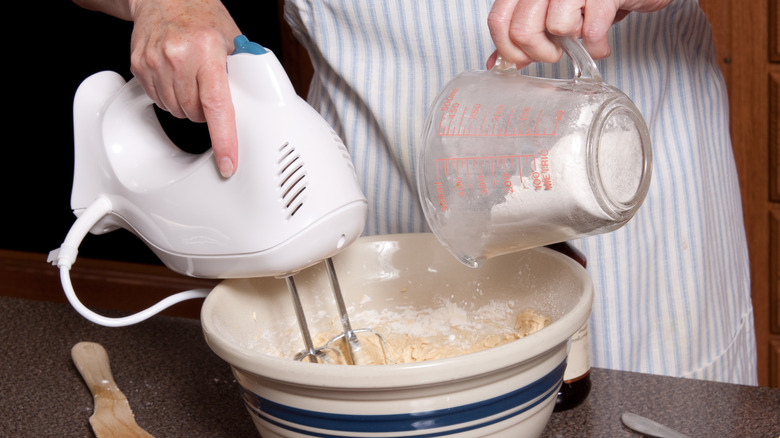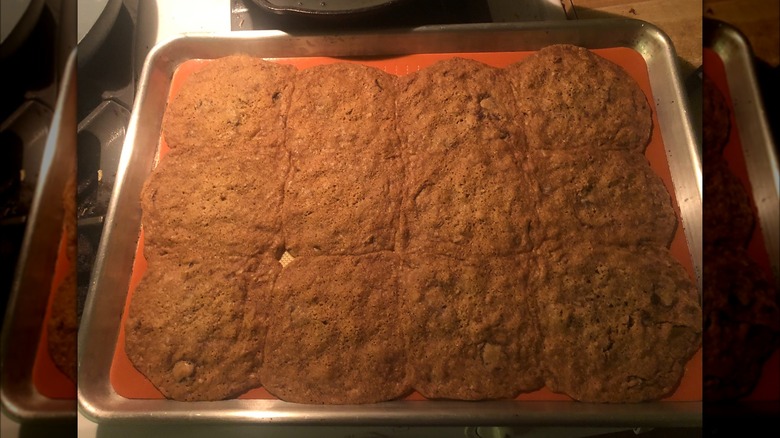The Biggest Mistake When Making Chocolate Chip Cookies Is Adding Too Little Flour
Most people would probably agree that chocolate chip cookies are supposed to be thick and chewy, not crispy. That's not to say there isn't a time and a place for a thin, crunchy version of the fan-favorite treat, but when you open your oven expecting cookies that look like they came straight out of a bakery and instead find that your cookie dough has spread into a massive, flat blob, you know something has gone wrong.
What's the cause of this all-too-common cookie-baking mistake? We have the answer: There wasn't enough flour in the batter, which can occur when the pantry staple is haphazardly measured or simply eyeballed during the dough-making process.
Having the correct amount of flour is crucial for a chocolate chip cookie recipe because it helps retain the fat in your dough, which, more often than not, is butter. As the butter melts during the baking process, the flour will soak it up. If there isn't enough, however, the excess liquid butter will cause your dough to become runny, resulting in your cookies spreading wide and thin across the baking sheet.
There's a simple fix for this common cookie mistake
Once you find yourself with a tray of flat, crispy cookies, you probably know you don't want it to ever happen again. Luckily, adding one to two more tablespoons of flour is a quick and easy fix for salvaging any leftover dough you have. You might also want to try baking a single test cookie after doing so and adjusting the recipe from there.
Additionally, if you want to avoid repeating this baking disaster in the future, learning how to properly measure flour is key. For starters, you should always fluff your flour before measuring it out. You'll also want to spoon the fluffed flour into your measuring cup as opposed to digging it straight out of the bag or canister, as the latter could result in you packing in too much flour, which could also result in your cookies falling apart. Make sure to slightly overfill your measuring cup, as well, and level off any excess flour with a knife to ensure you've got the precise amount your recipe calls for. If all of this just sounds like too much, you could also ditch this method entirely and instead measure out your flour by weight using a kitchen scale.

